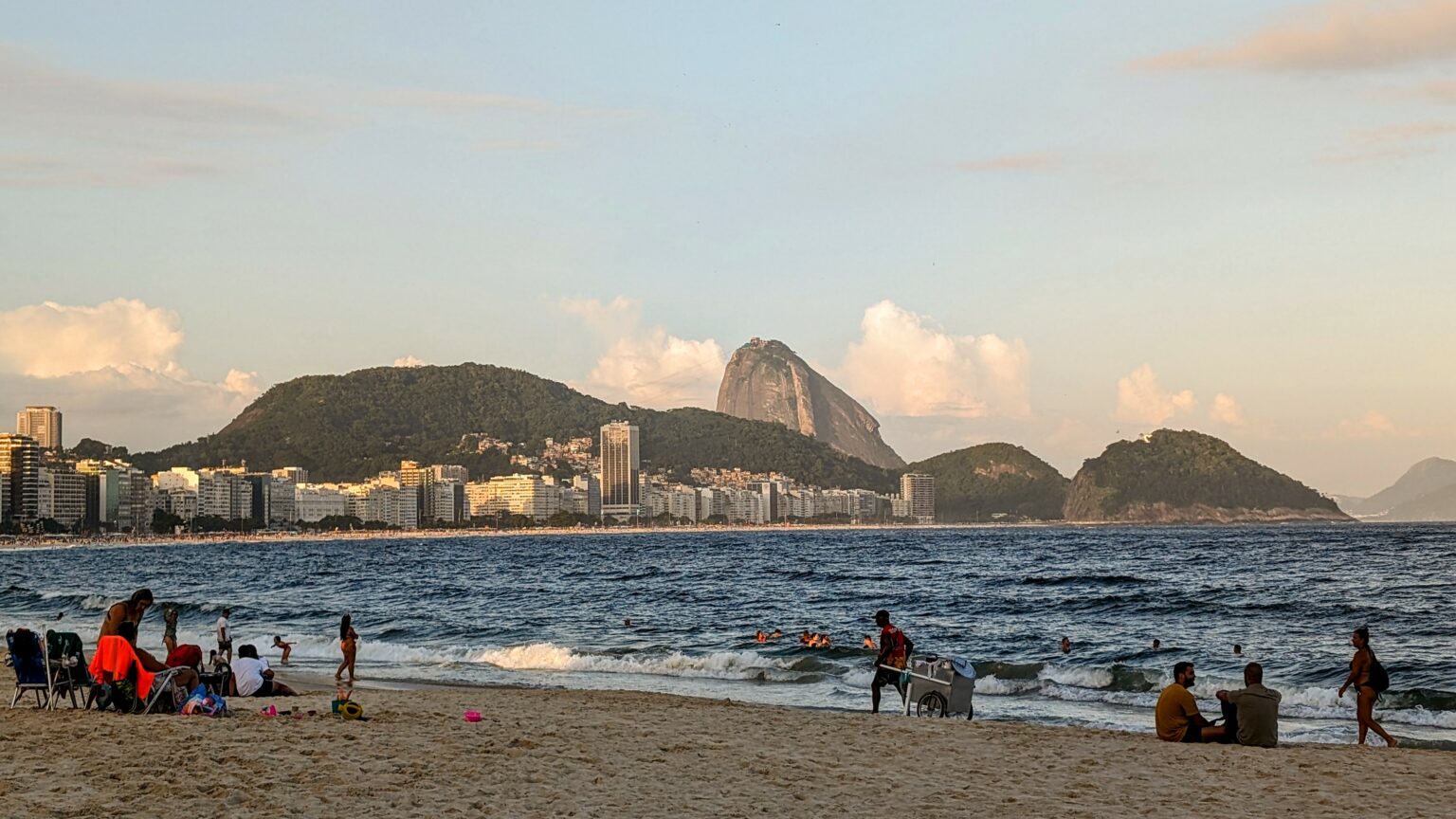The Rio de Janeiro culture is electric and can be felt the moment you enter the city. It’s a combination of color, music, heat, joy, grittiness, and movement, often displayed during the Carnival season in Rio de Janeiro. However, you can truly feel the energy any time you come to visit.
The following are a few of the affordable ways that we were able to feel part of that culture.
A Free Walking Tour
I always like to start our trips with a free walking tour of the city. You can read more about these in this blog post from Buenos Aires. Local residents (in Rio de Janeiro, they are called Cariocas) lead the tours and have information about the history and culture that has made the place what it is today. Did you know that Rio de Janeiro was once home to the emperor of the Portuguese empire? I didn’t until I took this tour to learn more about the Rio de Janeiro culture and history.
Rio de Janeiro is rich in history because of its significance as a port city, empire capital, and country capital. Today, even though it is no longer the political capital of Brazil, it is the primary tourism and culture center of Brazil.
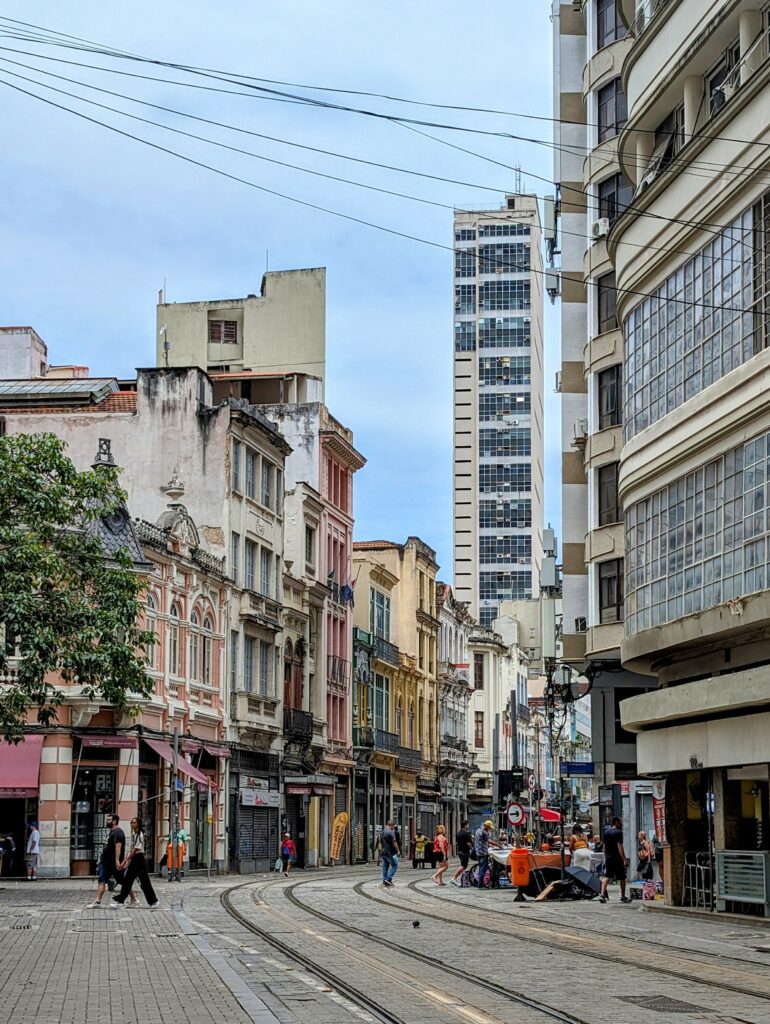
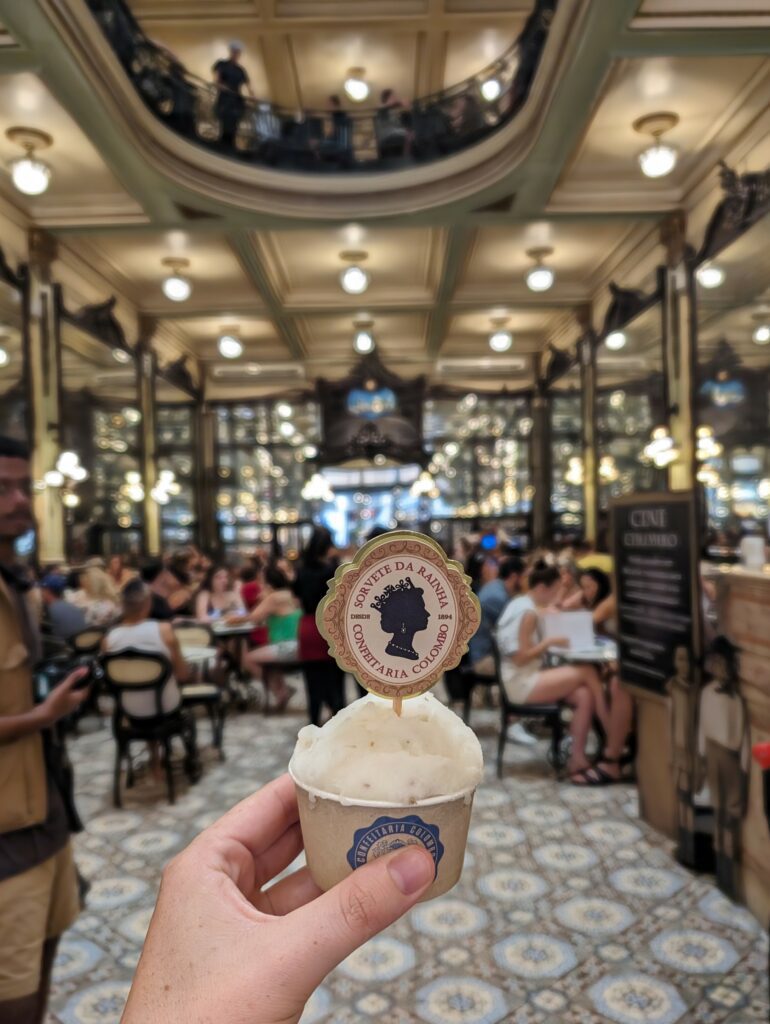
This walking tour through the city center showed us the different eras of Rio de Janeiro. In addition, our guide introduced us to the popular and typical Brazilian food, letting us try some in the famous Confeitaria Colombo. The tour ended at the Escadaria Selarón, a modern piece of public art. Chilean-born artist Jorge Selarón updated the stairs in front of his home with tiles. As the stairs grew in popularity, more and more people started sending him tiles from all around the world to add to the stairs.
Our tour was almost four hours long, a testament to the amount of information that our guide, Elaine, had for us. The company has other tours within the city, including some pub tours (a great way to meet people) and learning about the African heritage of Brazil. You can learn more about the tour and the company we used here.
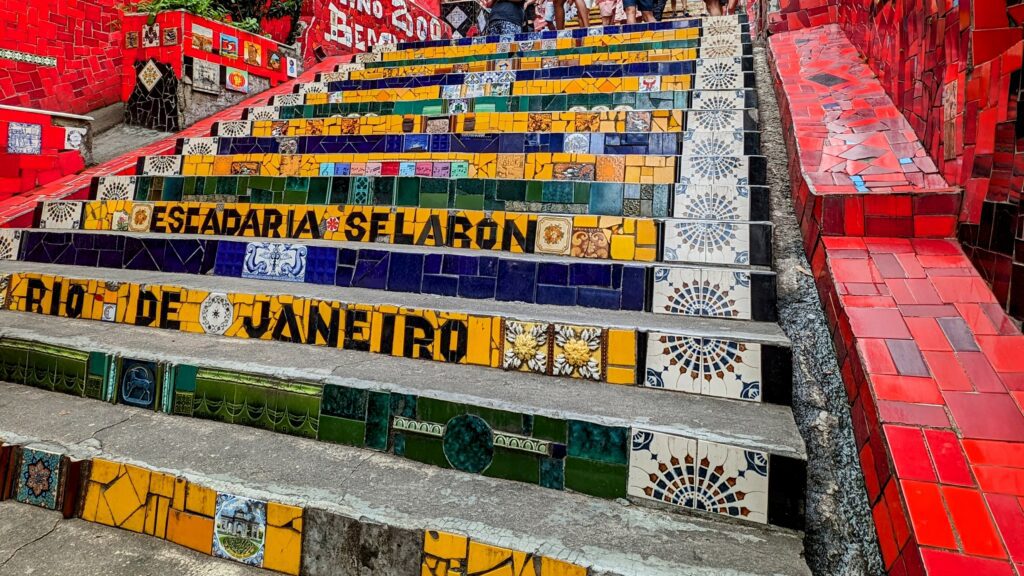
Samba Music
A big part of Rio de Janeiro culture is samba music. Rio de Janeiro is the capital of samba music, a musical genre that originates from Afro-Brazilian communities.
Today, you can experience a street samba party every Monday and Friday at Pedra do Sal in Gamboa. However, casual settings throughout Rio de Janeiro also display samba music. Musicians are seated and play instruments and sing around a roda de samba (samba circle), often at a bar. The audience stands around these musicians, singing along, dancing, clapping, swaying, etc. Because these bars are often narrow, the party typically spills into the streets attracting people all around to join the energy.
Bip Bip, a bar in Copacabana was our introduction into samba. Here, there were a few fridges in the back of the bar where people could serve themselves drinks while someone was keeping track of each person’s tab by hand in the front of the bar. There truly was no pressure to purchase anything and many people were just there to listen to the music. It was clear that many people were regulars, greeting each other, dancing together, and singing along to the songs. The music started between 8-9 pm and went on well into the night.
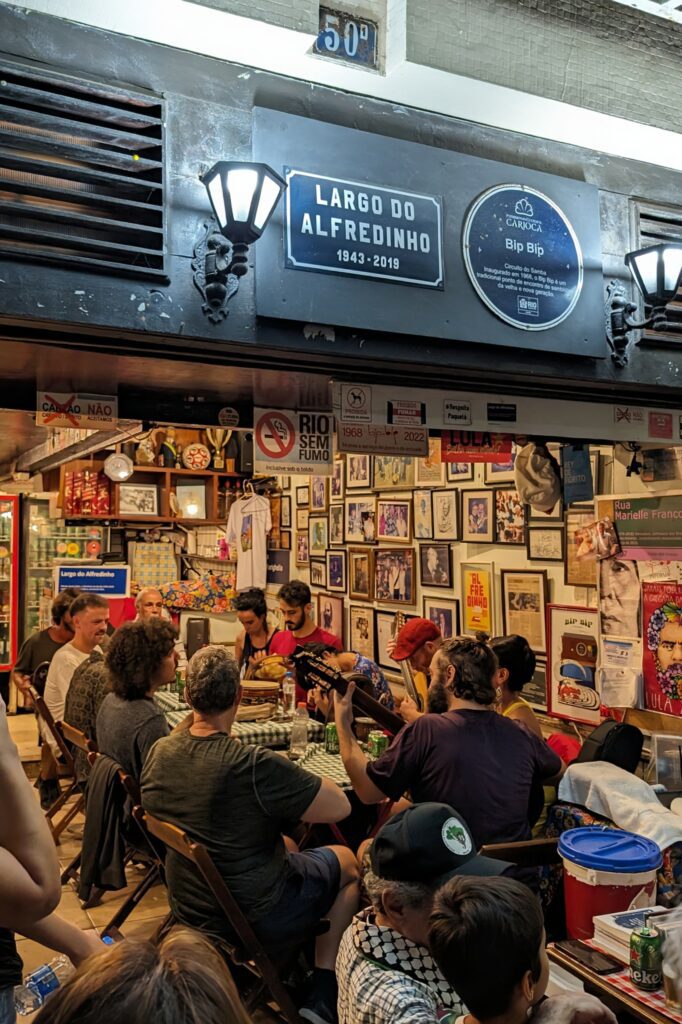
Later in the week, as we were walking through Copacabana towards our accommodations, we heard music coming down the street and decided to see where it was coming from. We walked into a samba bar with people dancing in the street. It was a clear example of how magnetic and inviting these parties truly are.
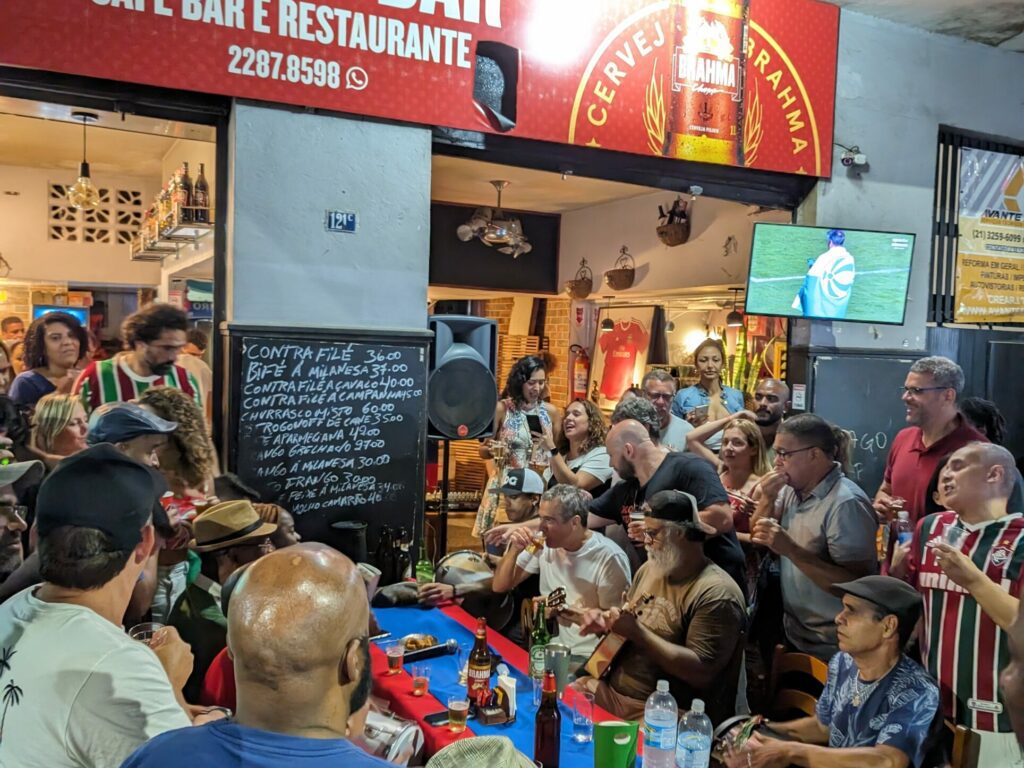
Sunday's Hippie Market in Ipanema
Every Sunday at Praça General Osório in Ipanema, there is an artisan market. This market lasts all day and is full of artisans, artists, furniture manufacturers, small souvenirs, and food vendors. We wandered through the market looking at the art and appreciating the artistry that was apparent in this market.
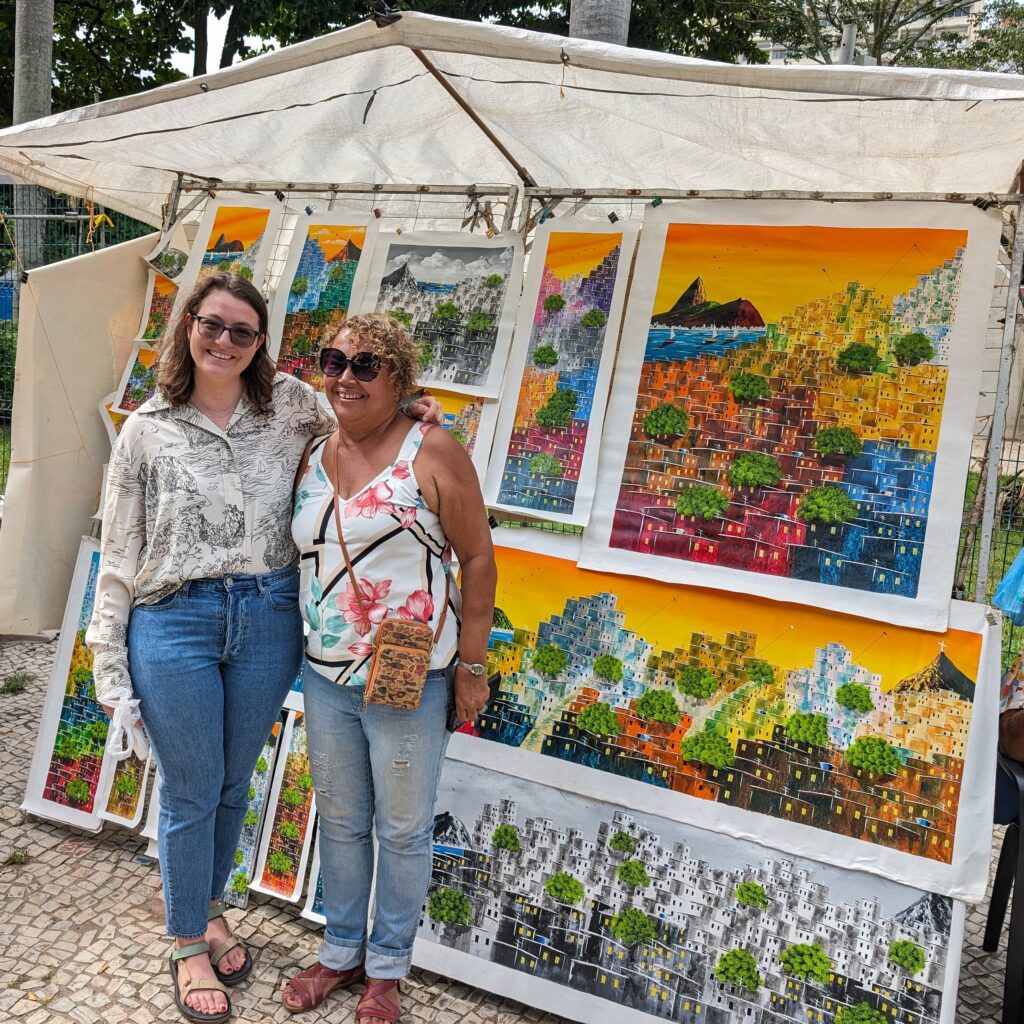
We purchased a piece of art from a local artist, Virginia Gomes. She paints scenes of Rio de Janeiro, especially the patterns of favela homes climbing up mountains. Her paintings have strong colors, adding in the vibrancy of the city into her paintings. Every weekend, she is at the market and you can find more of her art here.
There were many other artists at the market with different styles. Walk around to find some art or souvenirs or just take advantage of this open-air free art museum.
Copacabana and Ipanema
Copacabana and Ipanema are the famous beaches of Rio de Janeiro. There are many other beaches around the city but these are the two that are the most touristy or near where most tourists stay in the city. Both of these beaches are large and beautiful!
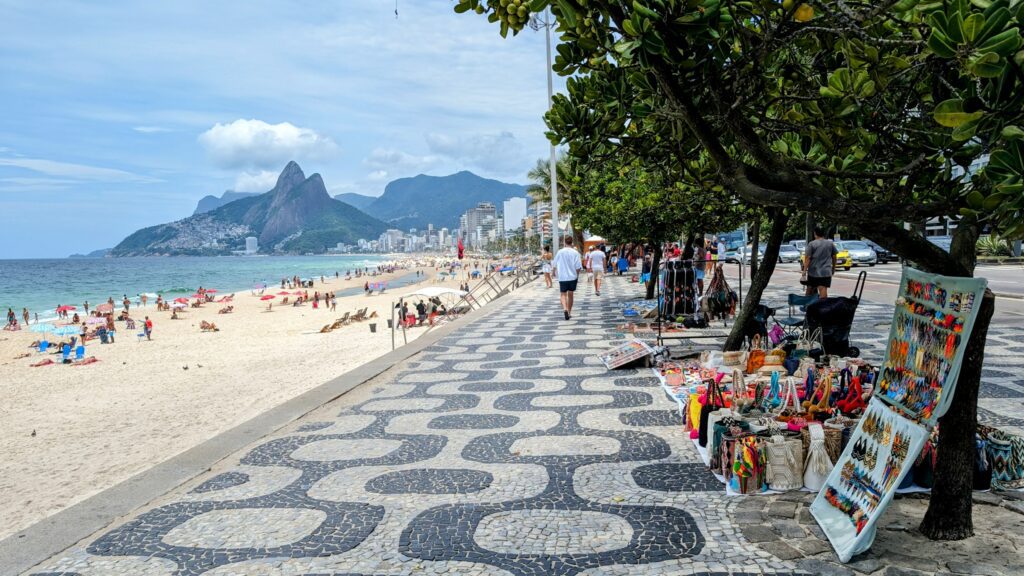
The best way to spend time at the beach
It is completely free to sit on the beach and enjoy the waves and the views. However, due to the amount of sun in Rio de Janeiro, I recommend renting at least a parasol. The vendors line the beach, each with their own tent numbers. Many of these vendors line the boardwalk at the top of the beach to try and sell you on using their area. Eventually, we picked a spot we liked. The beach does get pretty crowded and there are no bad areas for people-watching.
Once you pick a location and a vendor, they sell chairs, parasols, and drinks. (Warning! The – caipirinhas here are strong! Caipirinhas are the local drink in Rio de Janeiro.) They typically have a few sizes of parasols that range in prices. We paid around $2 US per chair and $2.50 US for a medium parasol and the shade saved us from sunburns and heat-stroke.

Along the beach, people walk by selling clothes, food, and cigarettes. We did not purchase from these vendors but we saw other people buying from them. Use your discretion when purchasing the food. You don’t know how long the food has been out, if there’s sand in it, or, what it even is sometimes. Beach clubs along the boardwalk sell food and drinks as well and are a much safer bet.
Sunset at Ipanema
Every evening, at Praia do Arpoador (just east of the Ipanema beach), hundreds of locals and tourists gather to watch the sunset. As the sun passes below the horizon line, everyone claps. These collective traditions in Rio de Janeiro felt powerful. We all stopped to experience the same moment in time together, no matter the language or culture barriers.
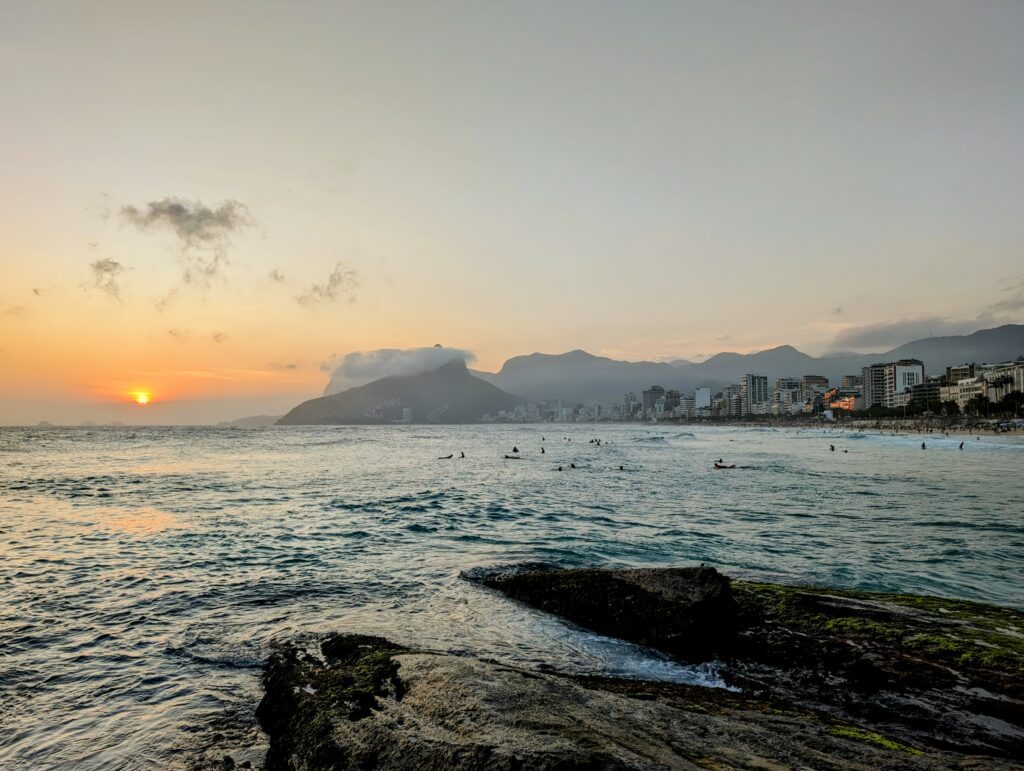
Staying safe at the beach
While the beach and boardwalk areas are safe, there are a few guidances that you should follow to make sure you have the best time possible:

- Do not leave your valuables unattended. If you intend to go in the water and are alone, bring a dry bag so you can take your things into the water with you. We switched off going into the water and watching our valuables
- Do not walk on the beach after dark. This is when people typically get robbed on the beach
- Watch your bags when walking on the boardwalks, especially when crowded and busy as this is when pickpockets happen
- Take it all in! You are on one of the most beautiful beaches surrounded by an amazing landscape in the middle of a city!

